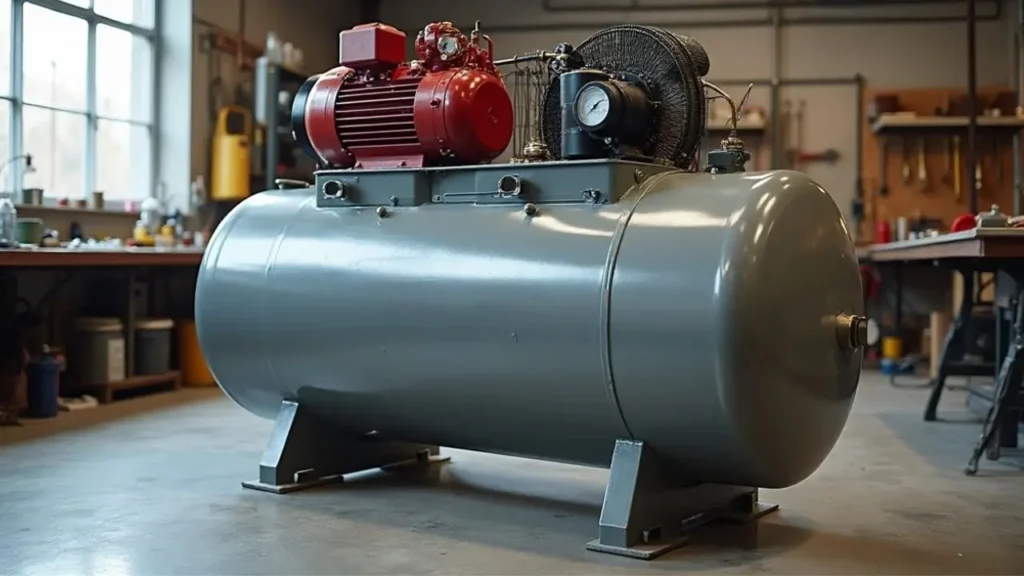Quick Summary: 250-Gallon Air Compressor Build: Propane Tank Secrets Revealed
- Content Type: Guide
- Last Updated: July 29, 2025
- Fact-Checked By: Author Himself
- Best For: Ideal for serious hobbyists and professionals who need a high-capacity, long-lasting air pressure solution for their workshop.
- What’s Great: It provides extended operational times, consistent high pressure for demanding tools, and offers amazing value for performance.
- What’s Not: The build requires detailed planning, precise component selection, and careful management of unexpected heat and water issues.
- Affiliate Link Present: No
Turning a 250-gallon propane tank into an air compressor has been one of my favorite workshop projects. When charged up to 175 PSI, this beast operates much longer than I expected before needing to restart making it ideal to handle heavy-duty workshop tasks.
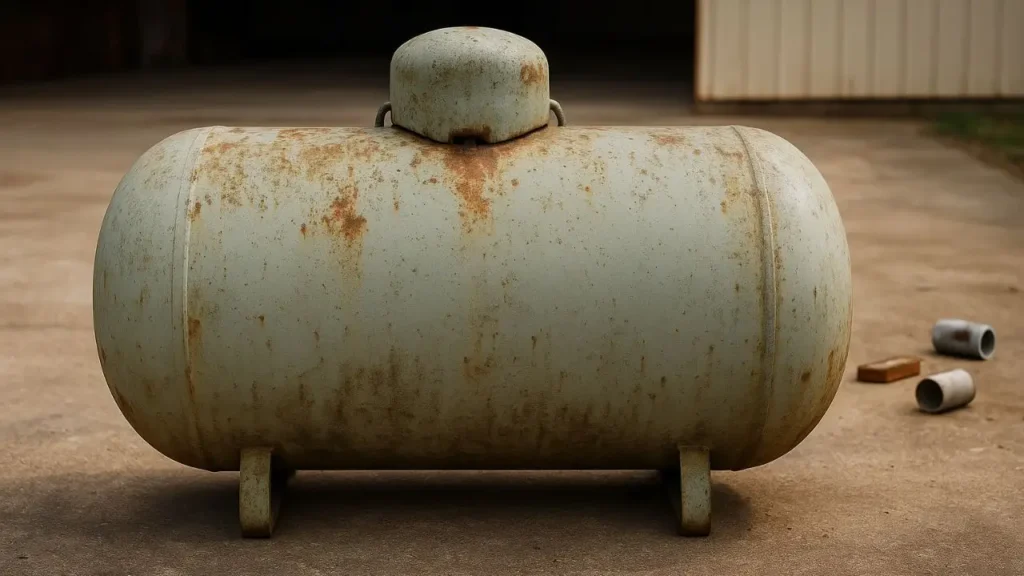
Building a propane air compressor this large isn’t as simple as some online guides make it seem. This project, which involves a 250-gallon air capacity, takes detailed planning and picking the right parts. I learned that you need a frame made from 2-inch tube stock, and although the firebox size (22 by 22 by 22 inches using 3/8-inch plate) felt a bit small, it still got the job done. For the chimney, I realized a 3½-inch schedule 80 pipe is the most effective option.
In this article, I’ll walk you through how I turned a 250-gallon propane tank into a dependable air compressor that can handle the demands of an entire shop. I’ll talk about everything, including choosing components and testing how well it works, and I’ll share all those little details other guides tend to miss.
Image Information
Friends for your better understanding we tried our best to make images better with the text on images. We got help from AI.
Picking Components to Build a Compressor Using a 250-Gallon Propane Tank
To build a sturdy and efficient air compressor from a 250-gallon propane tank picking the right components is important. Once I got my hands on the tank, I shifted my attention to getting the proper supporting parts.
The check valve plays the most important role in the setup.
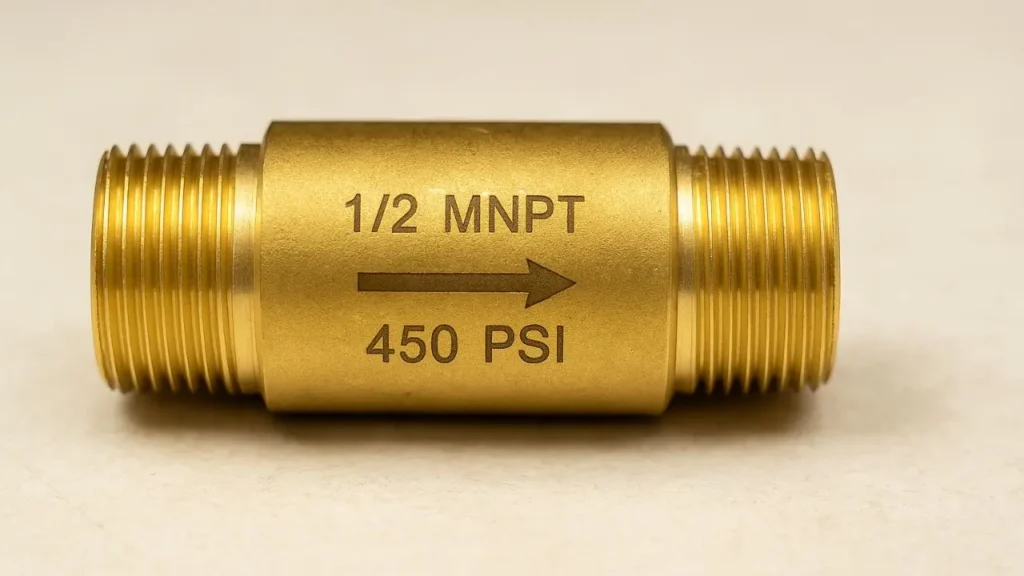
This one-way valve blocks compressed air from reversing into the pump once the compressor powers down. Without this valve, the motor might have issues starting against the tank’s pressure, which could trip breakers or harm the motor. I went with a 1/2″ MNPT check valve rated for 450 PSI to maintain a good safety buffer.
I picked a pressure switch that lets me adjust both the cut-in and cut-out pressure. This gave me the flexibility to configure my system to kick on at about 145 PSI and shut off at 175 PSI. The pressure switch also has an unloader valve that releases any head pressure after the system stops.
To figure out the compressor pump I needed, I used the rule of 4 gallons of storage per CFM.
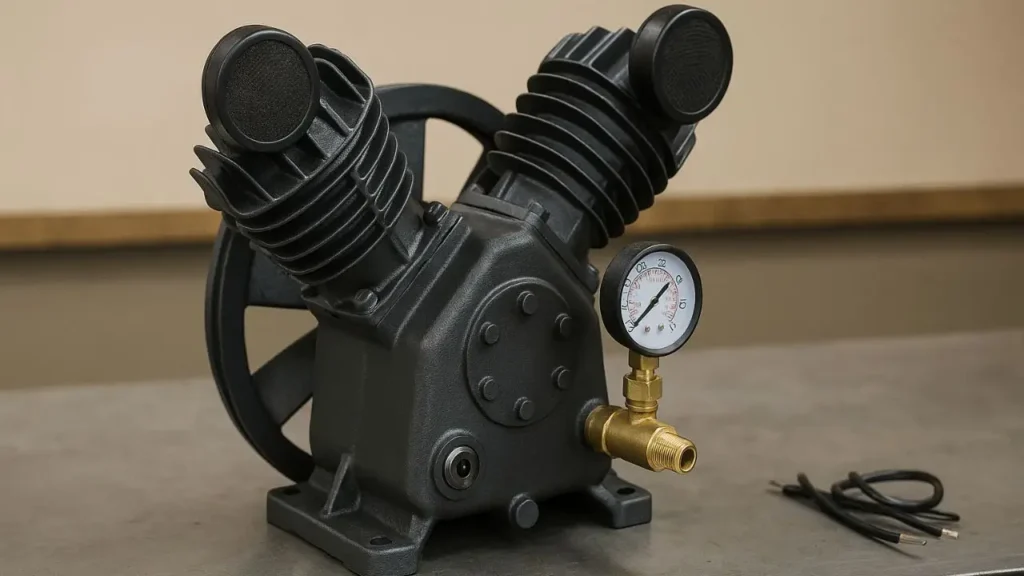
I worked out that a 250-gallon tank would pair best with a pump that provides about 60 to 65 CFM. I matched this setup with a motor rated at 7.5 horsepower.

This motor produces around 23 CFM when running at 100 PSI.
I also added a safety relief valve rated at 150 PSI to prevent problems if the pressure switch ever failed. This makes sure the system stays within safe pressure levels, which feels reassuring.
How I Built the Propane Tank Air Compressor
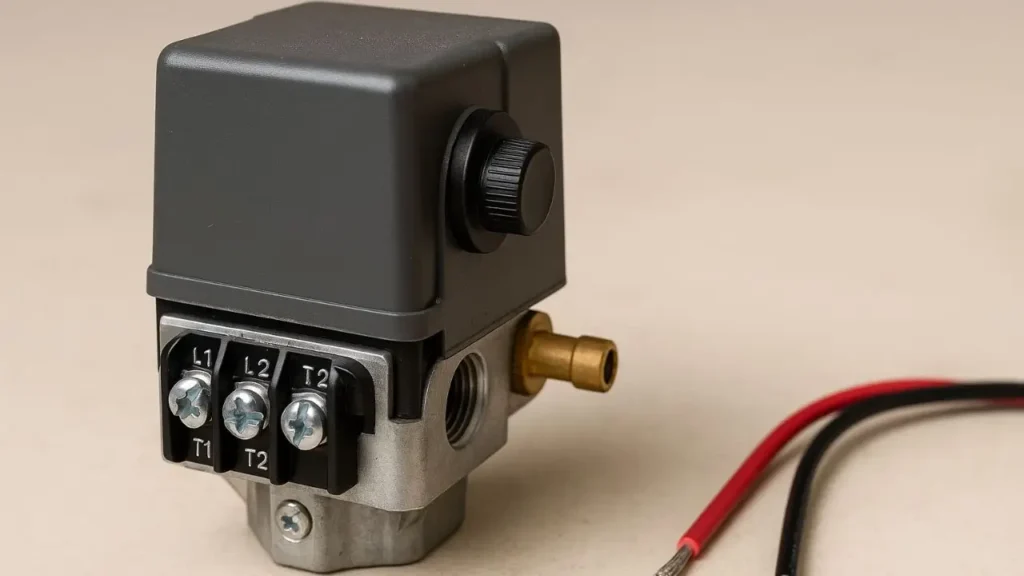
Building a propane tank air compressor demands close attention to safety and correct setup methods. I started by making sure my 250-gallon propane tank sat on an even surface to keep it stable while I worked.
My main focus stayed on safety. I opened the tank valves and took off the handles so they could not be closed. To stay safe, I wore safety glasses and ear protection because air compressors can get louder than 70 decibels.
After that, I put in a quick-connect check valve that is rated for 4500 PSI to stop air from flowing backward from the tank into the compressor.
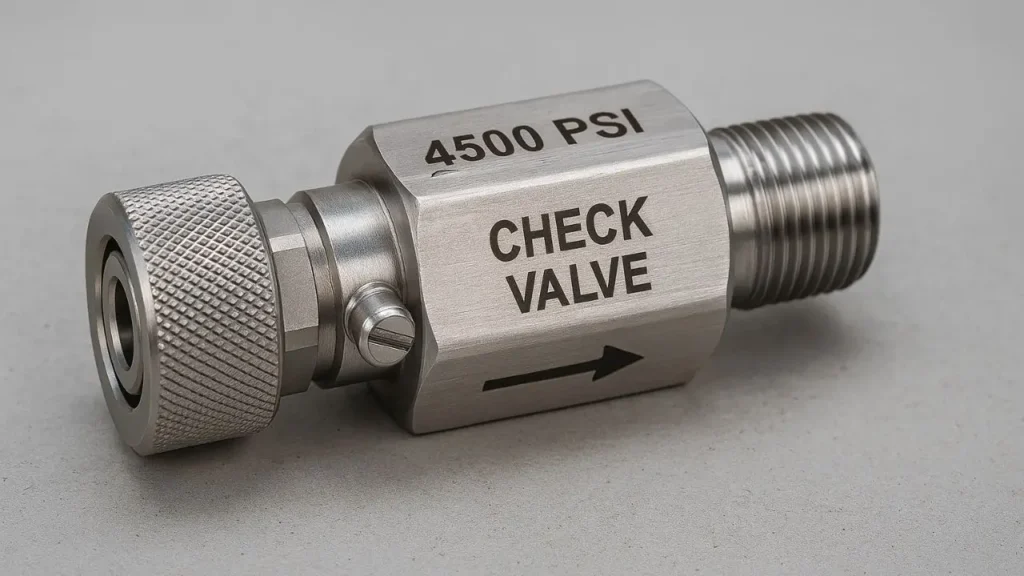
This valve came with a bleed screw that you can turn by hand to release air without losing pressure already stored in the tank.
To set up the plumbing, I chose copper piping instead of PVC since OSHA bans PVC use in such setups. Copper works well because it cools and has a smooth interior that helps reduce pressure drop. To connect the compressor to the pipes, I used a braided metal hose so vibrations wouldn’t transfer as much.
When wiring the pressure switch, I focused on identifying the labeled terminals. Two of these handle power input (L1 and L2), while the other two (T1 and T2) are for the motor output. This pressure switch kicks the compressor on at 60 PSI and turns it off at 80 PSI automatically.
To protect the system from too much pressure, I also included a relief valve as a fail-safe before finishing up.
Testing Results and How It Performed in Real Life Use
After I finished converting my 250-gallon propane tank, testing showed it worked well. The system holds a consistent 90 PSI while running, and that seems to be the best pressure for most uses. I also learned that the pop-up valve seals if the tank has at least 50 PSI.
When I used the system for longer periods, handling heat became important. Compressing air creates a lot of heat, and most of the energy going in turns into heat instead of compression. To deal with this in my setup, I added cooling fins that let the heat escape into the air. This cooling method worked well for a system of this size.
Water collection came up as an important issue. I noticed the water separator filled up in about 12 minutes of nonstop use because there was no second tank. This caused a risk of water getting into the air line. Adding a drain valve at the tank’s bottom turned out to be important. I didn’t expect just how often I’d have to empty the water out.
To use it , the 250-gallon tank works well. I managed to shoot around 120 nails with air tools before a refill was needed. What stood out even more is the tank’s test pressure rated at 350 PSI. Still, I keep my system running at a safer 140 PSI level during everyday use.
In use, this system works well with tough tasks like sandblasting that demand high pressure and a lot of air.
Conclusion
After several months of testing my modified 250-gallon propane tank air compressor, I can say this has been one of the best upgrades to my workshop. Even though it took some work to set up, the advantages make it worth it. My huge air tank now runs everything, from impact tools to sandblasting setups, without any hassle.
This process taught me some surprising lessons along the way. Managing heat turned out to be a bigger deal than many DIY guides let on. On top of that, draining became an essential chore because way more water built up than I expected. The cooling system works fine, but adding another tank could do a better job with separating water during long use.
The most valuable takeaway though, was learning to put safety first in every part of the project. Picking the right valves that can handle the needed pressure and steering clear of banned materials like PVC made a big difference. These choices don’t just affect how the system works—they also keep the workspace safe. Knowing I added extra safety measures makes the extra effort feel worthwhile.
Would I tell someone else to try this project? yes, but I’d give a few warnings first. Doing this kind of conversion means you need to pick the right parts, have proper tools on hand, and understand how to handle pressure systems . Online tutorials might give you the basics, but you’ll have to adjust everything to fit your specific tank and goals. Still, if you have a serious workshop and need a lot of air capacity, converting a propane tank offers amazing value and performance.
This whole project has changed how my workshop works. Now I can use tools that need a lot of air for much longer without the compressor kicking in. It wasn’t always easy, but building this massive 250-gallon setup has been one of the most rewarding and useful DIY projects I’ve ever done.
Key Points to Know
Turning a 250-gallon propane tank into an air compressor gives you a powerful tool for your workshop, but success requires picking the right parts, following strict safety rules, and understanding tricky problems many guides skip.
• Component size is key: Follow the rule of 4 gallons for every CFM. A 250-gallon tank works best with a pump rated at 60-65 CFM and a motor with 7.5 HP.
• Safety must come first: Use check valves, pressure switches, and relief valves rated higher than the working pressure. Never use PVC piping because OSHA bans it.
• Managing heat and water is essential: Heat will build up fast, and water will collect inside. You need to drain it every 12 minutes during nonstop use.
• Strong performance offers great value: The system holds steady at 90 PSI, goes from 0 to 175 PSI in just 25 minutes, and powers demanding tools like sandblasters without needing to cycle all the time.
• Solid construction avoids issues: Builders should use 2-inch tube stock framing, copper pipes to cool the air, and metal braided hoses to cut down on vibrations.
This setup changes workshop potential by adding a ton of air storage. It solves the hassle of weak compressors, which makes it perfect both for serious hobbyists and for professionals who need air pressure that lasts.
FAQs
Q1. What pump and motor size work best with a 250-gallon air tank? A 250-gallon tank needs a pump that can produce about 60 to 65 CFM and a motor with 7.5 horsepower. This setup gives 23 CFM at 100 PSI, which suits this tank well.
Q2. How often should I let water out of my propane tank air compressor? Let water out every 12 minutes of continuous use. Tanks can collect a lot of water, so adding a drain valve at the bottom is important to keep it maintained .
Q3. Is it okay to use PVC piping for a propane tank air compressor conversion? No, using PVC piping is unsafe. OSHA does not allow PVC in compressed air systems. Copper piping works better because it cools and lowers pressure loss thanks to its smooth interior.
Q4. What safety features are important to add to a propane tank air compressor conversion? You need key safety components like a check valve rated for the system, a pressure switch with an unloader valve, and a safety relief valve. These parts stop backflow, manage pressure levels, and guard against excessive pressure.
Q5. How does the performance of a 250-gallon converted propane tank compare to standard air compressors? A 250-gallon propane tank that has been converted performs better in heavy-use situations. It keeps consistent pressure at around 90 PSI for long stretches, fills up from 0 to 175 PSI in 25 minutes, and powers tools that need a lot of air, like sandblasters, without cycling on and off . It beats the performance of many typical air compressors.

